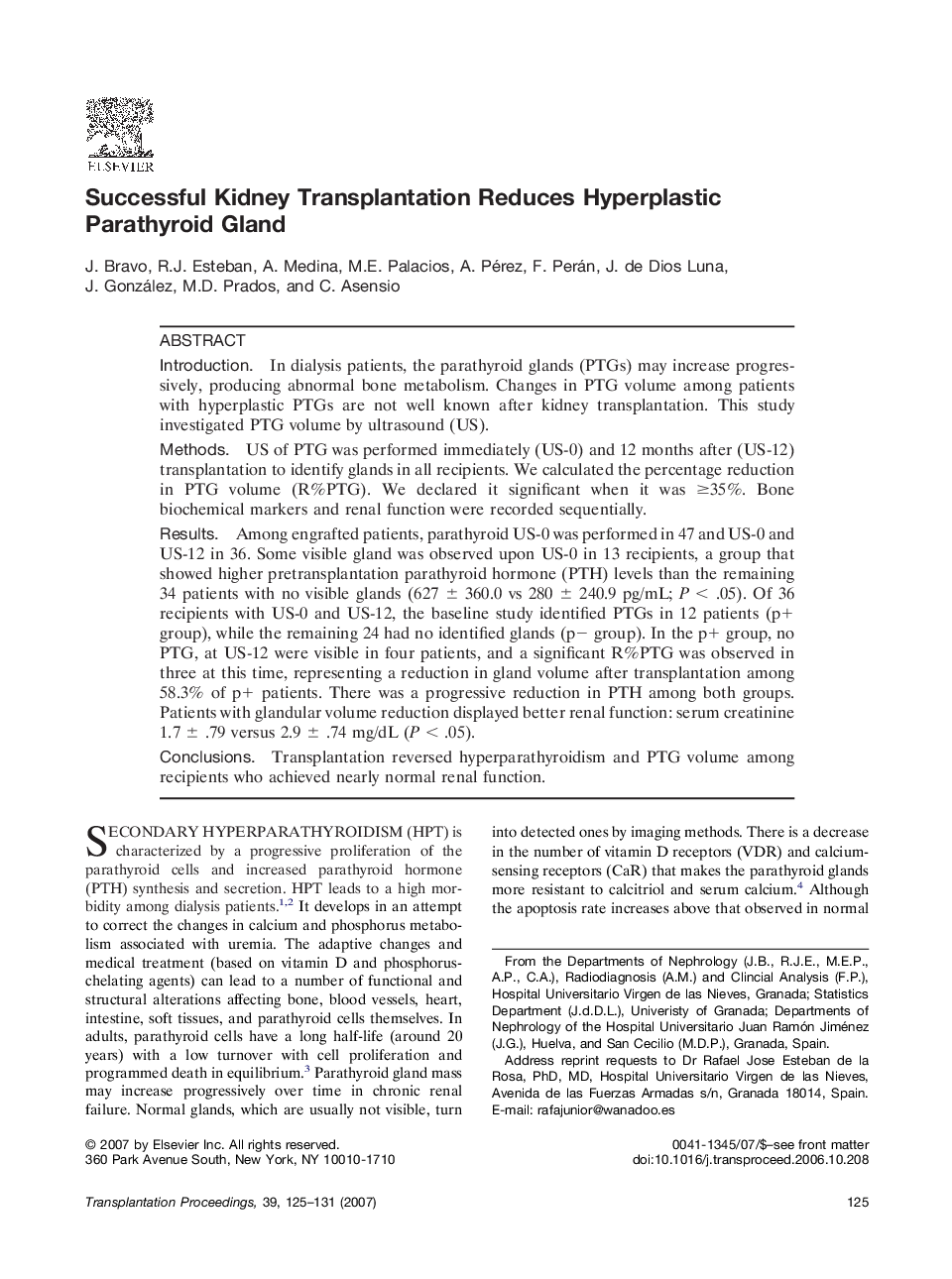| Article ID | Journal | Published Year | Pages | File Type |
|---|---|---|---|---|
| 4262925 | Transplantation Proceedings | 2007 | 7 Pages |
IntroductionIn dialysis patients, the parathyroid glands (PTGs) may increase progressively, producing abnormal bone metabolism. Changes in PTG volume among patients with hyperplastic PTGs are not well known after kidney transplantation. This study investigated PTG volume by ultrasound (US).MethodsUS of PTG was performed immediately (US-0) and 12 months after (US-12) transplantation to identify glands in all recipients. We calculated the percentage reduction in PTG volume (R%PTG). We declared it significant when it was ≥35%. Bone biochemical markers and renal function were recorded sequentially.ResultsAmong engrafted patients, parathyroid US-0 was performed in 47 and US-0 and US-12 in 36. Some visible gland was observed upon US-0 in 13 recipients, a group that showed higher pretransplantation parathyroid hormone (PTH) levels than the remaining 34 patients with no visible glands (627 ± 360.0 vs 280 ± 240.9 pg/mL; P < .05). Of 36 recipients with US-0 and US-12, the baseline study identified PTGs in 12 patients (p+ group), while the remaining 24 had no identified glands (p− group). In the p+ group, no PTG, at US-12 were visible in four patients, and a significant R%PTG was observed in three at this time, representing a reduction in gland volume after transplantation among 58.3% of p+ patients. There was a progressive reduction in PTH among both groups. Patients with glandular volume reduction displayed better renal function: serum creatinine 1.7 ± .79 versus 2.9 ± .74 mg/dL (P < .05).ConclusionsTransplantation reversed hyperparathyroidism and PTG volume among recipients who achieved nearly normal renal function.
